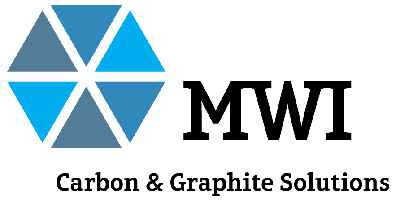
In today’s fast-paced world, innovation in the aerospace and automotive industries hinges on advanced materials that can withstand extreme conditions while ensuring high performance. Graphite electrodes have emerged as key players, providing exceptional electrical conductivity, thermal stability, and resistance to oxidation. From powering electric vehicles (EVs) to supporting next-generation aircraft systems, graphite electrodes are shaping the future of these industries.
Graphite Electrodes’ Role in Aerospace
Graphite electrodes play a pivotal role in modern aerospace manufacturing. Their use in critical components, such as turbine blades, airfoils, and structural parts, demonstrates their value in high-performance applications. Graphite’s unique properties enable it to handle intense heat and stress, which is crucial for components in aircraft that need to remain stable and functional under high-temperature, high-stress conditions.
One area where graphite electrodes truly shine is in Electrical Discharge Machining (EDM). This precision manufacturing process is essential for creating intricate parts in the aerospace industry. EDM enables manufacturers to create complex shapes and patterns with high accuracy, ensuring that even the smallest details meet stringent safety and efficiency standards.
Sinker EDM & Wire EDM
Both Sinker EDM and Wire EDM are extensively utilized in the aerospace industry for their precision and ability to meet stringent manufacturing standards. Here’s a closer look at each process:
- Wire EDM: Wire EDM enables exceptional precision, achieving tolerances within microns, which is critical for aerospace parts that need seamless integration and reliable operation in extreme conditions. It’s ideal for thin-walled, delicate structures common in aerospace, as the process minimizes mechanical stresses, reducing the risk of deformation. This method also handles high aspect ratios, allowing for deep, narrow cuts essential in crafting intricate components like cooling channels in turbine blades and vanes, where space constraints are critical.
- Sinker EDM: Sinker EDM, using a shaped electrode (often graphite or copper), allows for the creation of complex internal geometries, such as deep cavities and pockets that are challenging to achieve with traditional machining. This capability is crucial for parts like turbine blades and fuel system components with detailed internal features. Additionally, sinker EDM is employed to produce precision tooling for aerospace manufacturing, including molds, dies, and fixtures. These tools ensure that parts remain aligned and meet exacting specifications, essential for consistency and reliability in high-performance aerospace assemblies.
Graphite Electrodes’ Role in Automotive
Graphite electrodes are key components in the automotive industry, particularly in the production of electric vehicles (EVs) and the recycling of steel. With the rise of electric mobility, graphite electrodes play a crucial role in EV battery manufacturing. They contribute to the production of lithium-ion batteries, which power vehicles for longer distances with shorter charging times. The efficiency and precision of graphite enhance battery performance, driving advancements in EV technology.
Beyond batteries, graphite plays a role in other automotive parts such as brake linings, gaskets, and clutch materials. Additionally, graphite electrodes are crucial in machining lightweight metal components like aluminum and magnesium, which reduce vehicle weight. This contributes to improved fuel efficiency and lower emissions in combustion engines. It helps the automotive industry meet sustainability goals while maintaining strong performance.
As the shift towards electric vehicles and sustainable practices in steel recycling accelerates, the demand for graphite electrodes grows. In steel production, electric arc furnaces (EAFs) use graphite electrodes to melt scrap steel, iron, and other non-ferrous metals, enabling the creation of new steel from recycled materials.
Recent Innovations in Graphite Electrode Technology
The technology behind graphite electrodes continues to evolve, meeting the demands of ever-advancing aerospace and automotive industries. Recent innovations, including micro-porous and ultra-high-density materials, have expanded their applications to areas such as supercapacitors and fuel cells. These advancements enable electrodes to withstand higher electrical currents and thermal loads, making them ideal for cutting-edge applications.
Researchers at Berkeley Lab have developed a method to improve the fast-charging performance of graphite anodes. By coating the anode with a thin layer of silver, which is highly soluble in lithium, they achieved enhanced reversible capacity retention.
Sustainability is also becoming a key focus in graphite electrode production, with new manufacturing methods prioritizing environmentally friendly processes and the recyclability of graphite materials. This aligns with global efforts to reduce waste and conserve resources. Additionally, graphite’s versatility has led to its growing use in 3D printing, particularly in prototyping, offering new possibilities for rapid and cost-effective development of components across various industries.
Graphite Electrodes and Future Industry Trends
Looking forward, the aerospace and automotive industries are expected to increase their reliance on high-performance graphite electrodes. As EVs and hybrid vehicles become more prevalent, the demand for advanced battery components will surge, pushing further innovation in graphite technology. Additionally, as the aerospace industry explores more efficient and eco-friendly aircraft, graphite electrodes will play a central role in realizing these advancements.
Graphite will also be integral to the evolution of EDM and other high-precision manufacturing methods. With its unique capabilities, graphite continues to drive progress in applications where accuracy and durability are paramount.
Conclusion
Graphite electrodes are more than just components; they are essential for innovation in modern industrial applications for both aerospace and automotive industries. With ongoing research and development, the capabilities of graphite materials will only expand. This will enable these industries to achieve new levels of performance, sustainability, and precision.
If you’re interested in exploring graphite technology for industrial applications, check out the industries we serve. Need graphite electrode work?
REQUEST A QUOTE TODAY



